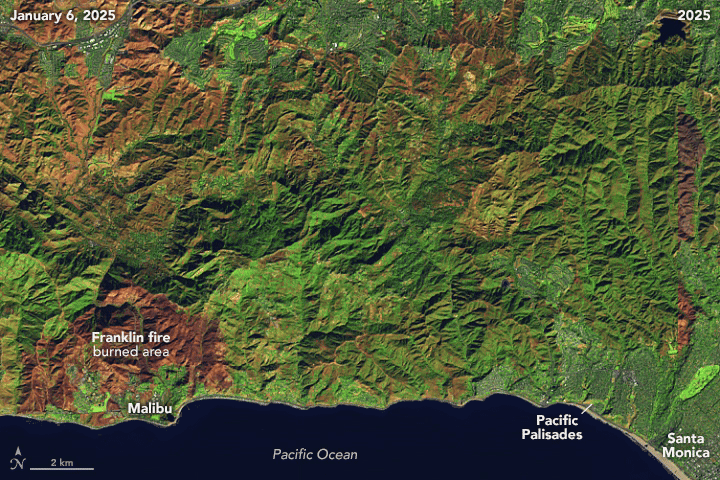Since multiple wildfires began to rip through Southern California earlier this month, firefighters have been working around the clock in order to contain the blaze. Some have taken to the skies, with planes dropping entire tankfuls of bright pink and red powder onto the flames, which has had people asking – what exactly is that stuff?
It might look like the colored corn starch used in some fun runs, but the powder being dropped by planes is actually fire retardant, containing a mixture of water, fertilizer (in the form of inorganic salts), and minor ingredients like colorants and thickeners. This particular blend helps to slow wildfires down.
“Aerially applied fire retardant is used to slow the rate of spread by cooling and coating fuels, depleting the fire of oxygen, and slowing the rate of fuel combustion as the retardant’s inorganic salts change how fuels burn,” explains the US Department of Agriculture (USDA) Forest Service.
Some have called into question the use of these retardants after a study published last year found that some contained toxic heavy metals, presenting a potential risk to the environment.
However, in response to the study, the Forest Service told Boise State Public Radio that “heavy metals are not added to retardants as corrosion inhibitors,” though adding that they “may be present as naturally occurring impurities in the retarding salts (which come from the same source as crop fertilizers).”
Why is it brightly colored?
There’s a good reason why the flame retardant comes in such vivid colors – it’s important to be able to see it.
“Colorants are added to make fire retardant visible, so that pilots can see where earlier drops were made and accurately aim subsequent drops to help connect or reinforce retardant lines,” explains the USDA. “Visibility of fire retardant is also important to help firefighters on the ground determine where to position themselves to construct fireline.”
“This is important because if retardant lines aren’t connected, wildfires can burn through the gaps.”
What’s happening with the fires now?
As of January 17, three fires are still active, including the largest two: the Palisades and Eaton fires. Combined, the two fires have burned through over 15,309 hectares (37,830 acres) of land.
It can be difficult to imagine what that looks like from down on the ground, but newly released satellite images have provided a new perspective of the sheer scale of the destruction.

False-color satellite images of the Pacific Palisades and Malibu areas on January 6 and January 14, 2025.
Image credit: NASA Earth Observatory images by Lauren Dauphin, using Landsat data from the U.S. Geological Survey.
Although it’ll be a while before the exact cause of the wildfires can be determined, it’s thought that a powerful bout of the Santa Ana winds has contributed to the spread.
Source Link: What Is The Red And Pink Powder Planes Are Dropping On The LA Fires?